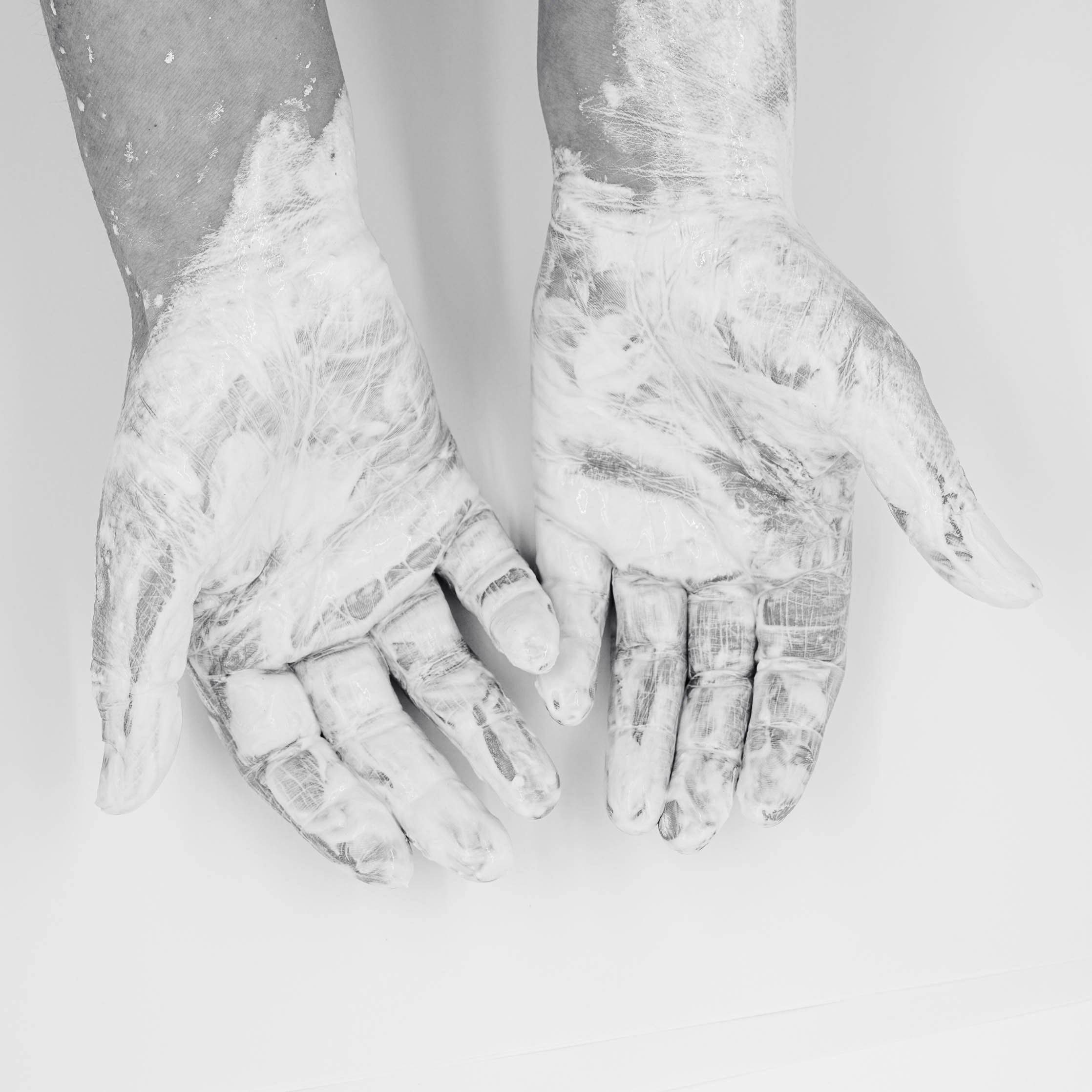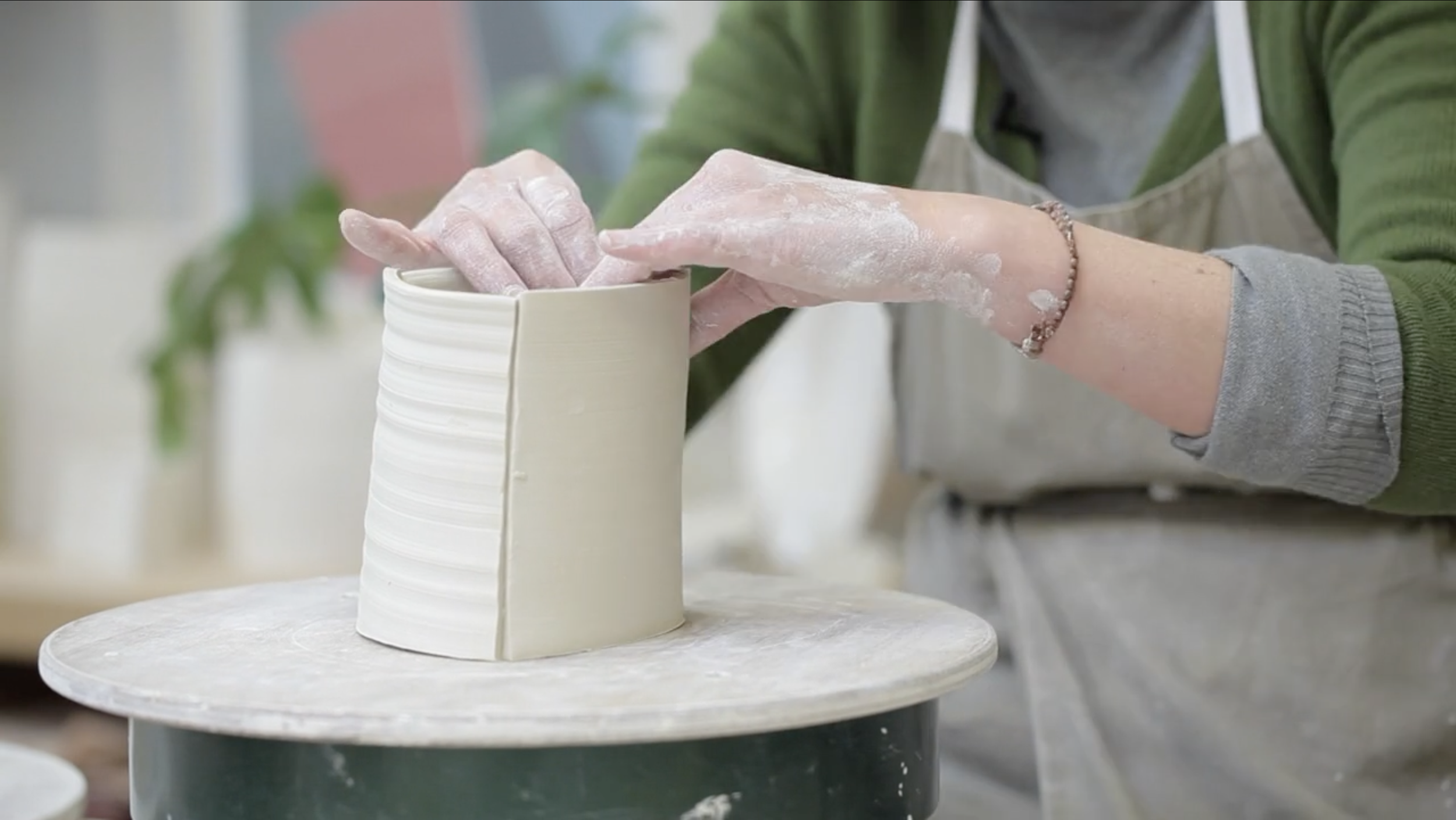
About Carina
Carina Ciscato is a Brazilian potter from Sao Paulo who works in South London. She has worked in the studio of Julian Stair and Edmund de Waal, and has exhibited internationally with work in public collections, including the V&A and the Mashiko Museum of Ceramic Art in Japan.
After graduating from Fundacao Armando Alvares Penteado, Sao Paulo in Industrial Design, she was introduced to Studio Pottery in Krefeld, Germany, where she worked in the studio of Marietta Cremer. On her return to Brazil, she was apprenticed to Lucia Ramenzoni, one of Sao Paulo’s leading ceramic artists.
Carina’s work captures the fluidity of clay as she masterfully alters and re-assembles the thrown forms with a natural sense of balance, form and material. She has been represented by Joanna Bird since 2004 and is in collections including the V&A and the Devonshire collection, as well as in significant private collections internationally.
Collections
Victora & Albert Museum, London, UK
Mashiko Museum of Ceramic Art, Mashiko, Japan
Devonshire Collection, Derbyshire, UK
Selected Exhibitions
Home from Home, CAA, London, UK
Vessels: The Spirit of Modern British Ceramics, Museum of Ceramic Art, Mashiko, Japan
The Arris Interpreted, Solo Exhibition, Messums / Joanna Bird, London, UK
Marking the Line, Pitzhanger Manor & Gallery, London, UK
Marking the Line, Port Elliot, Cornwall, UK
Marking the Line, Sir John Soane Museum, London, UK
Museum of Ceramic Art, Mashiko, Japan
Helen Felcey & Carina Ciscato, Blas&knada, Stockholm, Sweden
Functional Form Now, Galerie Besson, London, UK
Press
‘The joy of clay: ceramics celebrated at St Ives’, Financial Times
‘The Fourth Dimensions at Mashiko Museum of Ceramic Art, Mashiko’, Ceramics Now
‘How ‘Tropical Modernism’ informs the work of ceramicist Carina Ciscato’, Frame
‘The Wheel Keeps Turning – An Interview with Carina Ciscato and Chris Keenan’, The Courtauldian
Training
1988-92 BA Industrial Design – FAAP, Sao Paulo, Brazil
1992-93 Apprentice – Marietta Cremer, Krefeld, Germany
1993-99 Apprentice – Lucia Ramenzoni, Sao Paulo, Brazil
2000 – 03 Assistant – Julian Stair, London, UK
Residency

Space, volume and Architecture... It is partly sensory and partly an ideal aesthetics. It is relative, irregular and fragile.
This new work is about a search for an unconventional balance, constructing and reconstructing forms to create objects with a quality that solicits the expansion of sensory information, becoming tactile and unpredictable. Each pot has its own unique personality whilst belonging to a family of pots that share similar characteristics.
Tearing, cutting, folding, stretching, assembling, pooling the qualities of the material - porcelain because of its strength and fragility. It is the ways of playing with and exploring forms, space, and structure that inform this work.
It is thrown with a range of textures to distinguish different surfaces, allowing new relationships to emerge. All the process is exposed and revealed. There are no secrets. The quiet muted tones of white and blue grays are chosen to emphasize the fluidity and sharpness of the forms, reinforcing the edges, cuts and natural curves.
It gives us an opportunity to explore our perception of an object, its shapes, its forms and composition, discovering a hidden beauty, beyond function and predictability. It keeps questioning space and volume, function and purpose, balance and fragility in search of a purer aesthetic. Always allowing new meanings, new observations, and new ways of seeing and perceiving, rendering the object redefined and reinvented forever.


